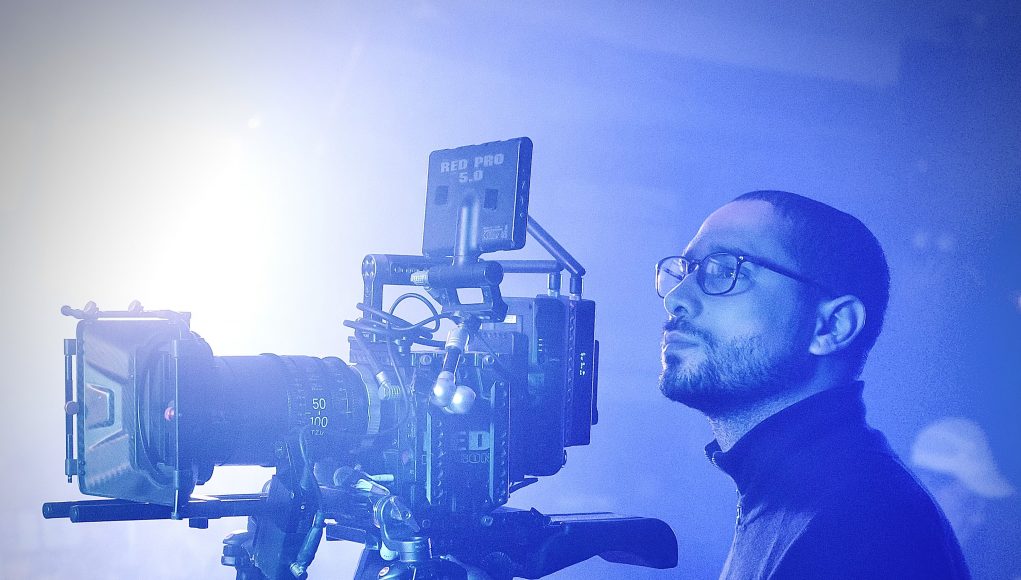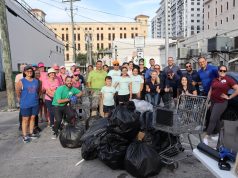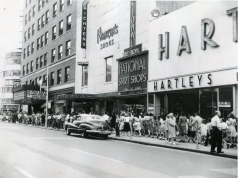Art is a communication tool that can reveal the truth. Beyond appealing to the emotions, it has been used by artists to denounce dictatorial regimes that have deprived societies of freedom of speech.
Such is the case with the work of Asiel Babastro, a 32-year-old Cuban audiovisual creator, writer, and artist with more than 25,000 followers on Instagram who has exposed the truth of the current Cuban society.
This past February, Babastro directed and produced the video clip of “Patria y Vida” (“Homeland and Life”), a song performed by Cuban artists Yotuel Romero, Gente de Zona, Descemer Bueno, Maykel Osorbo, and El Funky. With more than nine million views, it has become the theme song of the most significant protest movement in Cuba since the 1959 revolution, when thousands took to the streets this past July 11 all over the country.
The song’s title is a play on the slogan “patria o muerte,” (“homeland or death”) which is painted on buildings across the island.
“Throughout the world “Patria y Vida” has become the slogan to overthrow ‘patria o muerte,'” says Babastro. “Art frees you, art is the key; It seems to me that it is a complete artwork”.
The song will again likely make waves this Monday, on November 15, when protests are scheduled to take place in more than 100 cities around the world.
“‘Patria y Vida” reflects the deep discontent of the current Cuban society,” said Thays Soto, a Cuban research historian born in Havana who now lives in Miami. “It has become the anthem of freedom for Cubans because it communicates to the world how Cubans truly live. It symbolizes the meaning of change for those that have been oppressed for so long.”
Babastro was born September 12, 1989 in Morón, Ciego de Ávila, a province located in central Cuba. At age 10, he had his first encounter with art while he interned in an art school where he studied classical guitar. Despite the vicissitudes of Cuba at that time, he traveled miles daily by train to attend school.
Years later, he joined the theater and then enrolled in the Academy of Plastic Arts in Morón. At age 26, he decided to move to Havana, where he began work as an audiovisual producer.
In the years that followed, he collaborated with Cuban musicians such as Omara Portuondo, Pedrito Martinez, Waldo Mendoza, Orishas, and Los Van Van. He also worked with internationally renowned artists such as Gilberto Santa Rosa, Alejandro Sanz, and Beatriz Luengo.
He has produced more than 100 music videos and was a five-time winner of the Lucas Awards, which are dedicated to the best music video clips of the Cuban music industry. “Rolling Stone” Colombia magazine considered his audiovisual production of the song “Ámame como soy yo” one of the 15 most interesting videos of the year 2020.
Carla María Pérez Delgado, a young Cuban artist, model and graphic designer worked with Babastro back in 2019. She was the model for the video clip “Decirte cosas de amor” (Tell you love things) by the Novos brothers.
She says she was “shocked” when Babastro chose her to work on the piece because it was her favorite song. During the filming, he made her eat a burned rose not once, but twice.
“He is magic,” she says. “When he talks, you have to listen because he is very smart and talented, there is no way you won’t learn something from him. Babastro is more than an artist, he is a movement, and he drags you into his world.”
Although it took him years to understand and discover the true history of his homeland, the artist found the truth on his own by recognizing that he lived in a country where freedom of speech was censored. But since 2013, he has spoken out on social media, albeit subtly, the regime.
“When you live in Cuba you say many things from fear because we, Cubans, have been abused, the government has violated our freedom,” he said. “In Cuba, I did not dare to call the regime a “dictatorship.” Anything we say can be used against us.”
Babastro came to the United States in 2019 and a few months after, was contacted by the singer Yotuel Romero to collaborate and work on the video clip, “Patria y Vida.”
The video denounces the Cuban regime’s condemnation of its people to poverty and misery. It demonstrates a Cuba that the dictatorship has silenced and restricted to the outside world for years. As the song states,
“No more lies, My people call for freedom
No more doctrines, we no longer shout homeland or death, homeland or life
instead.
And start building what we’ve dreamed of
What they destroyed with their hands.
Stop the bloodshed
For wanting to think differently
Who told you that Cuba is yours?
If my Cuba belongs to all my people”.
These verses reference the desire of Cubans to choose their political ideologies instead of being forced to accept the one imposed by the regime. It also states their tiredness of seeing the country in ruins because the revolution did not keep its promise of building a country of prosperity.
Babastro had a clear vision of how he wanted to make the video clip. He wanted the singers to be the center of attention. He decided to use a simple scenography with a combination of dark lights so it would be easier for the two singers that were in Cuba to film their part.
“To put it in context, we are talking about two artists that are currently being watched by the Cuban state security. People that have been imprisoned for their art and expressing themselves against the dictatorship. They had to go to a building that is almost in ruins so they could film their part without being caught.”
In the video clip, he used images of a podium that burns in flames, which refers to the long speeches that Fidel Castro used to give. There is also a Cuban “peso” bill that contains the face of Jose Marti that turns to ashes and then gives way to an American dollar bill with the image of George Washington. This is a denunciation of the use of double currency in the country, and the images of the protest carried out by artists on November 27, 2020.
“Cuba is magical realism, a country steeped in hypocrisy and lies,” said Babastro while he put his hand on his chest. “In Cuba you grow up with two countries, the country that you love and would like to have but does not exist, and the country in which you survive.”
“When you as an artist get people to return or understand what you wanted to communicate, it only remains to thank the universe for allowing you to let go of your ego,” he says.
Referring to the civic march for a change that has been promoted by Cuban citizens this November, he says:
“I greatly admire the people who are in Cuba fighting for their rights, fighting against the system, fighting against the dictatorship,” he says. “Because seeing it from the inside is extremely complicated. You have to be almost a visionary to understand that the truth is in the opposite direction to everything that you have gone through. I believe that November 15 is the day that was decided for the truth to be told out loud, in the most reasonable way possible,”
“Being part of Cuba’s history in some way and honoring my ancestors, the mambises that existed in my family, the people who fought for the freedom of Cuba at a time when the colonial yoke was, brings me closer to a quiet death. It brings me peace of mind to know that I’m doing something for my country, that I’m at the service of the truth,” said Babastro.
The song has been nominated for the 2021 Latin Grammy Awards in the category of Best Urban Song of the Year. Even though the song will likely be silenced on the island’s airwaves when protesters take to the streets Monday, the Cuban people will be chanting “patria y vida.”
































